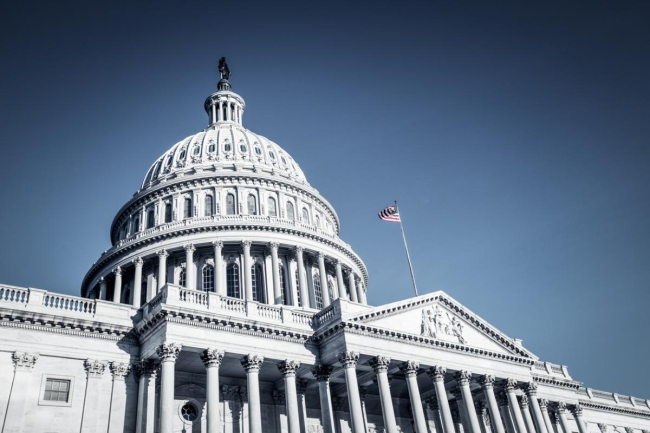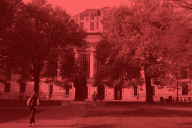You have /5 articles left.
Sign up for a free account or log in.

Advocacy groups are calling on Congress to double the size of Pell Grants.
istock.com/uschools
When researchers at the National College Attainment Network this month looked at data showing how many people were reapplying for federal student aid to return for another year of college, they were alarmed.
After dipping in the spring at the start of the coronavirus outbreak, the numbers over all had gone back to around what they were at this time last year. But not for the lowest-income students. The number of those with incomes less than $25,000 who were trying to get money to go back to school was down about 5 percent.
The numbers on reapplying for financial aid tend to be an indicator of whether students are coming back in the fall. Some higher education advocates are worried it’s a sign that as the pandemic has closed bars, restaurants and other businesses, where many students work to save money to make up the growing gap in how much of tuition Pell Grants will cover, many students aren’t able to afford to go back to classes.
That’s made it more urgent to raise, and even double, the maximum $6,345 students can receive through a Pell Grant, said NCAN’s executive director, Kim Cook.
“Extraordinary times call for extraordinary measures,” she said.
The chances of getting Congress to include the roughly $30 billion a year it would cost to double the maximum grant in the next coronavirus relief package, however, are appearing slim.
On Capitol Hill, talk of additional higher education funding in the next coronavirus package is focused on sending money to colleges and universities to help them reopen campuses safely. By way of comparison, The Washington Post reported last week in initial conversations, Senate Republicans and the Trump administration are considering providing $20 billion to $30 billion for all of higher education.
Democrats are pressing for a larger package than Republicans. But while the Senate’s top Democrat on education issues, Patty Murray, of Washington State, has talked about the need to increase the size of Pell Grants, neither the Democratic House nor Senate proposals for higher education are calling for increasing the size of the grants.
Spokespeople for Democrats on the House and Senate education committees declined to say why.
Meanwhile, in the separate debate over next year’s regular spending bill, a bill passed by the Democratically controlled House appropriations committee last week only increased the maximum size of Pell Grants by $150 to $6,495, just to keep pace with inflation.
But with Congress passing aid packages in the trillions, and expected to approve at least another $1 trillion, advocacy groups like NCAN, the Institute for College Access and Success, and the centrist Third Way are beginning to push for raising the maximum size of the grants, arguing it is needed to help students through the pandemic. The American Council on Education, representing colleges and universities, is seeking additional money for student aid in the next package. "It's critical to help families who have been negatively impacted by the pandemic," said Terry Hartle, the association's senior vice president for government and public affairs. However, the association isn't tied to whether the aid comes through existing programs like Pell Grants, or like in the CARES Act, is given in the form of emergency grants for institutions to distribute among their students.
Keeping students in college is key to the nation’s economic recovery, Cook argued. In the last recession, 80 percent of available jobs required a college degree.
“Now is not the time to step away, but double down,” she said.
However, Mary Clare Amselem, an education policy analyst at the conservative Heritage Foundation, cited research by the free-enterprise Foundation for Research on Equal Opportunity saying that the number of students whose families have incomes between $40,000 and $60,000 annually has increased. Middle-class students should be taking out loans instead of getting taxpayer-funded grants, Amselem said. "In the interest of insulating taxpayers as well as hedging tuition inflation, Pell Grant funding should be narrowly tailored to students who are truly in need," she said.
Even before the pandemic, advocacy groups had been calling on Congress to double the maximum grant students could get from Pell Grants, as tuition at more colleges around the country grew faster than the help students could get from the financial aid program.
An NCAN report found a smaller percentage of two- and four-year institutions are affordable than just a few years ago, considering the amount of tuition and how much students could raise to pay for it through Pell and other financial aid, loans, work-study and help from their families.
It was bad enough that only 35 percent of 535 four-year institutions were affordable to low-income Pell recipients in 2013-14. But just four years later, in 2017-18, the figure had dropped to 25 percent, the report said.
And, not only are more colleges unaffordable, they are becoming even more unaffordable.
The gap in what students at four-year institutions could afford doubled during that time from $1,212 to $2,406.
“Clearly, we had an affordability issue going into this pandemic and COVID has exacerbated it,” Cook said.
Jasmine Kemp, who is hoping to enter her senior year as an English major at Texas Southern University, said she would have taken any job when she returned home to Chicago this summer. “Even at McDonald's. I didn’t care,” she said.
But with the city in lockdown during the pandemic, there weren’t many jobs open. Her mother works at a nursing home, and she thought about joining her. But she lives with her mother, a single parent, and her 4-year-old brother. It seemed like having two people in the household at a nursing home, where coronavirus cases have been raging, would put her brother at risk.
She couldn’t pay the university $3,000 she still owes from last term, an amount that would be covered if her Pell Grant was twice as big. She doesn’t understand exactly why she owes the money.
The idea of not being able to go back to school weighed on her. “It’s my last year. What did I do the first three years for?” she said. The disappointment of her family was on her mind as well. Her mother hadn’t gone to college. Her father had been killed as a young man, a victim of Chicago street violence. She would be the first in her immediate family to graduate college.
She started a GoFundMe page. “It was embarrassing,” she said. Three weeks before she is supposed to return to Texas, she’s still $1,500 short.
The situation is somewhat unusual in Nebraska, said Mary Sommers, the financial aid director at the University of Nebraska at Kearney.
The state increased its college aid grant program, the Nebraska Promise, during the pandemic so that those eligible for Pell can get their entire undergraduate tuition paid for.
There’s still a gap in what students can afford for nontuition expenses, like room and board. And half an hour to the west and east of the rural campus are meatpacking plants that have had to shut down for a time because of outbreaks of coronavirus among their workers.
That has meant the families of some of the university’s students, and some students who work part-time, have lost their paychecks for a time, making it harder to save up for school. Around this time of year, some students would be working at county fairs. But with social distancing in place, they’ve cut back on food booths and rides.
But with the state covering tuition, Sommers said she has generally been able to dip into money raised by the university to cover the rest.
There hasn’t been money left over to help other students whose families make a little too much to qualify for Pell. “We unfortunately have to talk with students who don’t have a lot of support from their families about backing off on their credit hours or opting to enroll at a lower-cost community college before moving to the university,” she said. But she’d be able to help those students if Pell were increased and the university didn’t have to spend funds helping those students, she said.
“It would be a game-changer,” she said of doubling Pell Grants.
Despite the seemingly slim chances of significantly boosting the size of the grants this year, there are signs momentum is growing around the idea. Joe Biden, the Democrats’ presumptive presidential nominee, has included doubling Pell among his education proposals.
Sadly, the need will still be around for years to come, said Michele Streeter, a TICAS senior policy analyst working on the issue.
“The pandemic-related issues we’re seeing are not going to be resolved quick,” she said.








